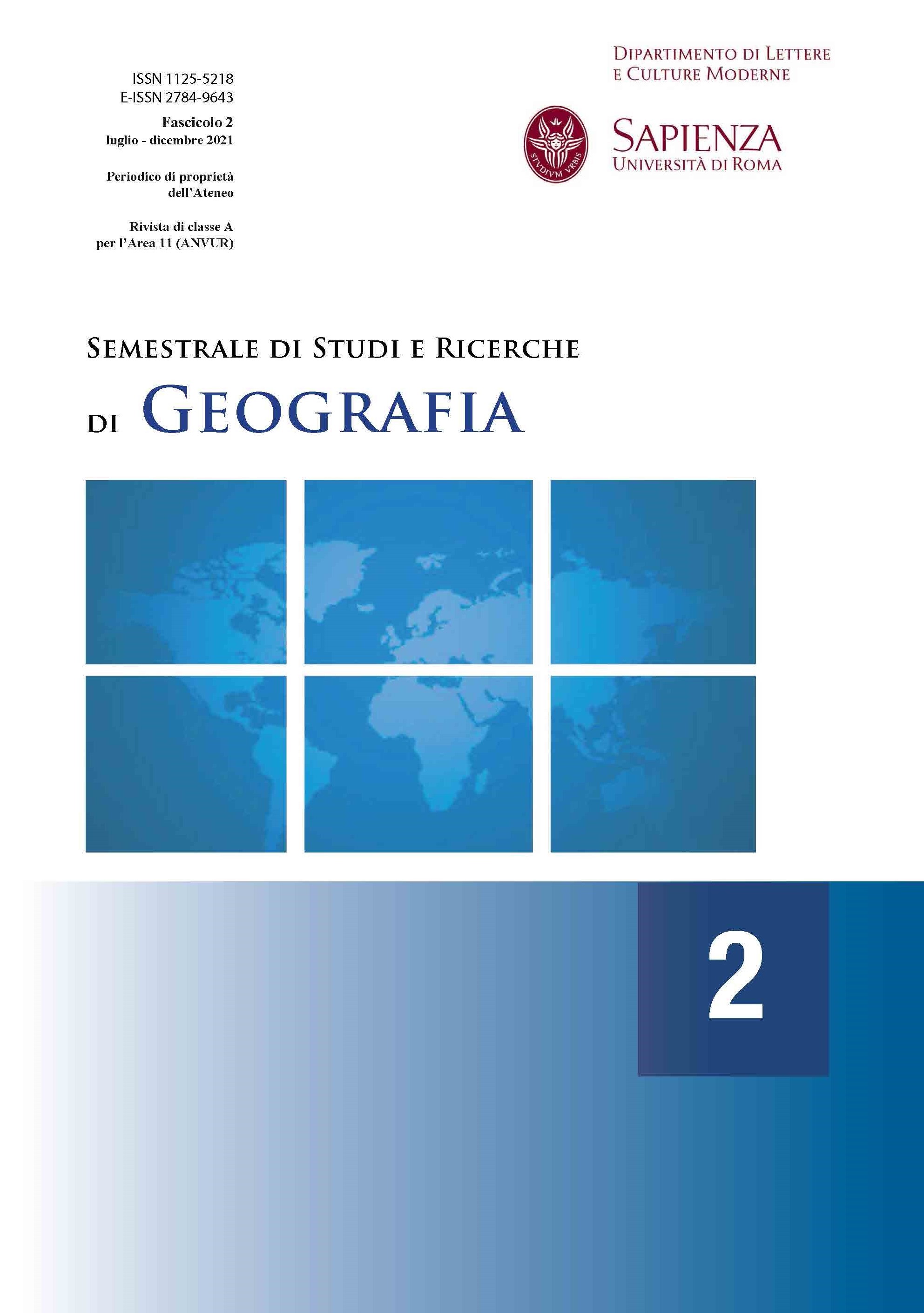Luoghi nello spazio: alcune prime sfide dell’esogeografia di fronte alla presenza e alle attività umane al di fuori della Terra
DOI:
https://doi.org/10.13133/2784-9643/17477Parole chiave:
esogeografia, territorializzazione, esplorazione dello spazio, insediamenti umani nello spazioAbstract
Over fifty years after the first Lunar landing, the present-day developments in astronautics are presenting humankind with the perspective of expanding its presence and activity beyond the boundaries of planet Earth. If it is true that such presence and activity have been the traditional cores of attention for geography as a scientific discourse, it is reasonable to assume that they will remain so even outside of their originary spatial boundaries. A possible evolution of geography might therefore be what has begun to be called exogeography i.e. the study of dynamics and processes which, after being developed on Earth during the past centuries, are likely to be developed in outer space or other celestial bodies in the future as well. This appears to be the case, since human territorialization processes appear to follow the same general patterns even though their scope and areas of action evolve with time. A reflection on this topic is being started in Italy and some initial steps were taken in recent years. This paper briefly summarizes some perspectives in this field. By reviewing some epistemological statements about geography in classical academic formulations, this work asserts that there is a definite potential of continuity between geographical studies, regardless of their being focused on Earth as a physical context or on other planets or interplanetary space. This is due to the fact that their ultimate objects remain, consistently, human presence and activity in the spaces where they occur.
##submission.downloads##
Pubblicato
Fascicolo
Sezione
Licenza
Copyright (c) 2021 Semestrale di studi e ricerche di geografia

TQuesto lavoro è fornito con la licenza Creative Commons Attribuzione 4.0 Internazionale.
Gli autori che pubblicano su questa rivista accettano le seguenti condizioni:- Gli autori mantengono i diritti sulla loro opera e cedono alla rivista il diritto di prima pubblicazione dell'opera, contemporaneamente licenziata sotto una Licenza Creative Commons - Attribuzione che permette ad altri di condividere l'opera indicando la paternità intellettuale e la prima pubblicazione su questa rivista.
- Gli autori possono aderire ad altri accordi di licenza non esclusiva per la distribuzione della versione dell'opera pubblicata (es. depositarla in un archivio istituzionale o pubblicarla in una monografia), a patto di indicare che la prima pubblicazione è avvenuta su questa rivista.
- Gli autori possono diffondere la loro opera online (es. in repository istituzionali o nel loro sito web) prima e durante il processo di submission, poiché può portare a scambi produttivi e aumentare le citazioni dell'opera pubblicata (Vedi The Effect of Open Access).


